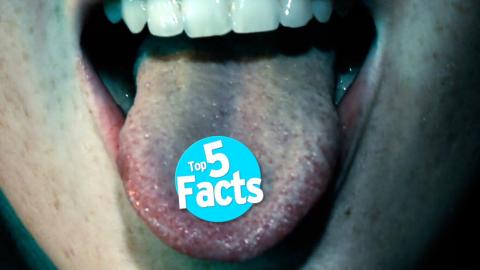Top 5 Facts About MDMA

MDMA, typically known as ecstasy or Molly, is one of the world's most infamous recreational drugs, and also one of its most fascinating. Welcome to Watchmojo's top five facts. In today's installment, we're counting down the most interesting facts you probably didn't know about Ecstasy, the world's favorite party drug. Don't confuse facts with endorsements though.
Special thanks to our user christo for submitting the idea using our interactive suggestion tool at http://www.WatchMojo.comsuggest
Top 5 Facts About MDMA (Ecstasy)
MDMA, typically known as ecstasy or Molly, is one of the world's most infamous recreational drugs, and also one of its most fascinating. Welcome to Watchmojo's top five facts. In today's installment, we're counting down the most interesting facts you probably didn’t know about Ecstasy, the world’s favorite party drug. Don’t confuse facts with endorsements though.
#5: MDMA Was Once Unofficially Used in Psychotherapy
Before MDMA was made illegal, it was becoming fairly common. Did you know that you could once buy ecstasy over the phone with a credit card and pay taxes on it? One company even sprang up that was allegedly selling as part of a pyramid scheme. It was also making its rounds in therapy circles in the late 1970s and early 1980s despite its less than official approach, as the drug was never approved by the FDA. One therapist was so enamored with MDMA that he introduced the drug to over 4,000 colleagues, with many of them praising the drug for its fast and efficient results in their patients. Despite its promising potential, the drug was scheduled a Class I narcotic in 1985.
#4: Ecstasy Could Help Cure PTSD
Studies suggest that ecstasy administered in a therapeutic setting to individuals with post traumatic stress disorder can dramatically lessen their fear responses, giving psychotherapists a critical window in which to help their patients. In one study, participants were given a combination of MDMA and therapy, and the results found that 80% of the trial group no longer met the criteria for PTSD, with only 25% of participants in the placebo group reaching the same results. While there are multiple studies with similar results, more research is needed before policy can be changed. Some in the medical community say that there is a re-emerging paradigm of psychedelic medicine, so that research just might come to fruition.
#3: MDMA is Deadlier in Warm, Cramped Conditions
The opposite of therapeutic use might just be recreational use, and the typical conditions in which it’s used as a party drug actually make it deadlier. A 2014 study by the National Institute on Drug Abuse provided MDMA to rats and found it to be non-fatal in cool, open spaces, whereas it proved to be far deadlier in warmer, more crowded locations. This is because the drug increases brain and body temperature while limiting the body's ability to cool itself, meaning that a hot location will exasperate the body's warmer temperature and cause the brain to overheat. It wasn’t just a matter of overdosing either– even some rats that received low to moderate doses died from excessive heat.
#2: MDMA is Associated with Higher Risks of Depression in Teenagers
While the teenage years are the times of experimentation for many, this unfortunately leads to many needless addictions and side effects, including ecstasy's heavy link to depression. A five year study conducted at the University of Montreal showed that those who used speed or ecstasy at fifteen or sixteen years old were at a significantly higher risk of suffering from depression than those who remained clean. Those students who used ecstasy were 1.6 times more likely to be depressed the following year. This is because MDMA works by releasing a flood of “feel good” chemicals into the brain, which leads to an unnatural and dangerous depletion after the drug wears off. The study’s authors admit that their research had its limitations, including the fact that they couldn’t test for sure what was in the drugs taken, which is significant because...
#1: Ecstasy Pills Are Rarely Pure MDMA
According to statistics released by Health Canada, in 2001, 69% of confiscated ecstasy pills or capsules contained pure MDMA, and only six years later, that number dropped dramatically to only 3%. The pills may be mixed with stimulants like methamphetamine or caffeine, random, unknown research chemicals, or even other illegal drugs like bath salts. At least, this seems to be the case in North America, or was in recent years, while in the UK they are having the opposite problem: a single MDMA pill can contain up to four times the standard dose, leading to a string of overdoses. With drugs shipping all over the world thanks to sales on the dark web, there’s no telling where your pal Molly came from or what’s in her.
So what did you think? Should MDMA be made available to psychotherapists? For more class one top fives and face-eating top tens published every day, be sure to subscribe to WatchMojo.com.
